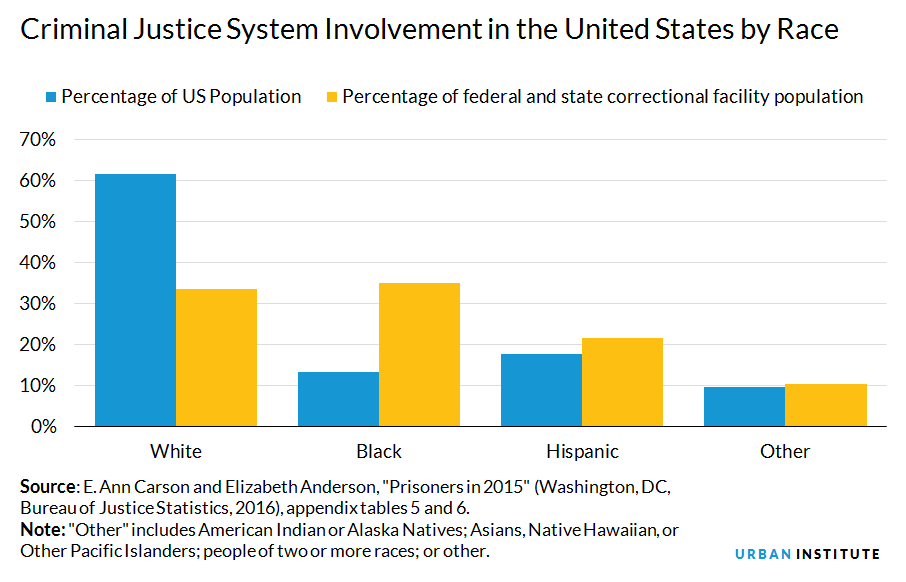
Photo by Craig Ruttle/AP.
May is Asian Pacific American Heritage Month, a time to celebrate the collective identity and diversity of Asian Americans and Pacific Islanders (AAPI). Over the next month, Urban researchers explore data that shed light on challenges faced by distinct AAPI groups and how these groups strengthen their communities.
Last month, Chicago aviation police violently removed 69-year-old Asian American physician David Dao from an overbooked United Airlines flight. The unsettling image of Dao being physically dragged off the aircraft offers a glimpse into the complexity of the so-called “model minority” myth, the idea that because Asian Americans and Pacific Islanders (AAPIs) demonstrate high academic and economic achievement, they do not face similar social barriers to their black or Hispanic counterparts.
Dao’s experience raises the question of whether AAPIs, despite their ostensible position of privilege, are impervious to police use of force, which disproportionately affects black and Latino Americans.
The United Airlines incident comes one year after the conviction of then–New York Police Department officer Peter Liang, an Asian American who received no prison time for fatally shooting Akai Gurley, an unarmed black man.
Liang’s case divided the AAPI community on the role his racial identity played in the outcome of his investigation. While some argued that Liang’s indictment amid a slew of non-indictments of white officers reflected racial bias against AAPIs, others contended that, regardless of his race, Liang should have been held accountable for yet another black man’s death at the hands of law enforcement.
It is difficult to establish whether either of these instances—just a year apart and on the opposite sides of police brutality—was racially motivated. Still, these cases illustrate AAPIs’ ambiguous position in the criminal justice system.
Lack of research on AAPIs and criminal justice limits our ability to reconcile seemingly disparate narratives set forth by high-profile cases like Dao’s and Liang’s. Without good data, we lack context that could otherwise ground these cases in evidence, better informing public opinion and policy.
Unmasking the “other”
Both in research and throughout the media, terms like “minority” and “person of color” typically imply black and Hispanic people, and those groups are the most highly and disproportionately affected by the criminal justice system. Nevertheless, that does not preclude a deeper investigation into how other racial and ethnic minorities, simply classified as “other,” navigate the criminal justice sphere.
Take these data from the Bureau of Justice Statistics:

They tell a clear story about the disproportionate number of black and Hispanic people involved in the criminal justice system, but say little about the “other” racial and ethnic groups who comprise roughly 10 percent of both the US and justice-involved populations.
From available data, we know that Asians are largely underrepresented in the federal criminal justice system, as they make up 5.6 percent of the US population but only 1.5 percent of the federal prison population.
But a quarter of state agencies do not include “Asian” as its own race category, and because the overwhelming majority of incarcerated people are housed in state prisons, we need rich data on both the state and federal levels to learn more about AAPIs in the justice system.
Research attempting to fill this void has been met with methodological challenges. Using state and 2010 census data, the Prison Policy Initiative found that the incarceration rate of Native Hawaiian/Pacific Islanders (NHPIs) in Hawaii was four times higher than that of non-Hispanic whites. Yet, they noted this figure understated the rate of incarcerated NHPIs because facilities used inconsistent measures to count race.
Even in cases where the data represent AAPIs, poor disaggregation obscures the evidence base stakeholders use to shape reform.
Rich data on AAPIs can improve criminal justice policies and services
Few examples show that data adequately disaggregating the “Asian” category can paint a more nuanced portrait of AAPIs in the system.
Take, for instance, San Francisco County, where AAPIs represent over 35 percent of the overall population. Using race categories reported by most federal and state agencies, AAPI representation in San Francisco Juvenile Hall in 2010 would appear almost negligible.

Sharpening the focus on AAPIs, however, the disaggregated data show that Samoan youth represent 0.56 percent of 10- to 17-year-olds in San Francisco County, yet constitute almost 5 percent of youth booked in San Francisco Juvenile Hall in 2010. It’s a subtle difference with significant implications for stakeholders’ efforts to support San Francisco’s at-risk youth.

Asian Americans and Pacific Islanders occupy a unique niche in the criminal justice conversation, one that the available data cannot sufficiently explain. Disaggregated data can strengthen our grasp of racial and ethnic disparities in the justice system, both by breaking down the vague “other” category and by providing critical insights on AAPIs. Research practices that acknowledge the multiplicity of experiences within the AAPI community can close service gaps and inform more inclusive policies.
We encourage researchers to elevate the debate and collect better data using measures that don’t flatten the multidimensional AAPI community.
Meanwhile, the public should consider the myriad social and economic positions of AAPIs—some that represent relative privilege in the eyes of justice and others that might not.
Despite being the fastest-growing population in the United States, Asian Americans and Pacific Islanders (AAPI) are often overlooked or reported as a monolith in research on racial and ethnic disparities. Representation matters—and that’s especially true in policy research, where “invisibility is an unnatural disaster” (Mitsuye Yamada). Aggregate statistics obscure communities’ contributions and needs, so data disaggregated by ethnic origin are needed to change stereotypical narratives around AAPIs in every area of policy research.
Let’s build a future where everyone, everywhere has the opportunity and power to thrive
Urban is more determined than ever to partner with changemakers to unlock opportunities that give people across the country a fair shot at reaching their fullest potential. Invest in Urban to power this type of work.